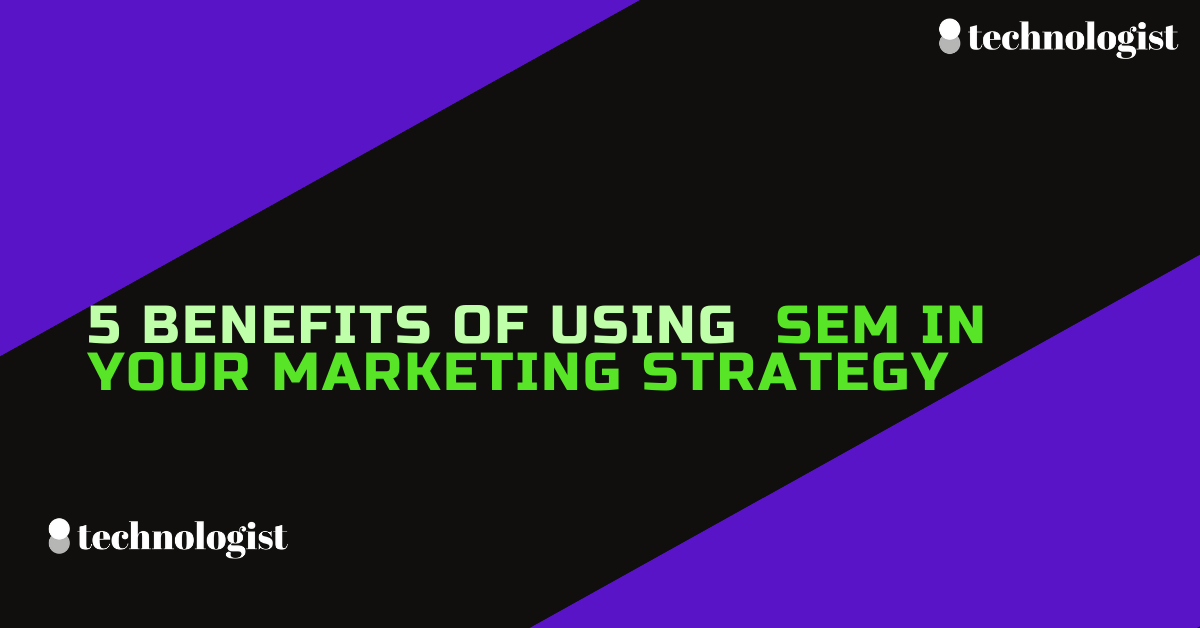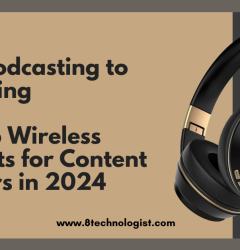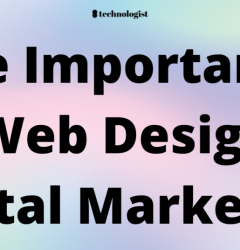05 Jun

It is no secret that digital marketing is now an absolutely vast proverbial arena. There are multiple ways to succeed, arguably more than ever before, but there are also numerous ways to fail. From Search Engine Optimization (SEO) to Search Engine Marketing (SEM), and from Pay Per Click (PPC) to email marketing, where do you begin? Moreover, some such terms are often sources of confusion. Say, how do SEO and SEM, two frequently overlapping practices, compare or synergize? To answer this, let us first distinguish between the two and then explore the benefits of using SEM in your marketing strategy.

It is no secret that digital marketing is now an absolutely vast proverbial arena. There are multiple ways to succeed, arguably more than ever before, but there are also numerous ways to fail. From Search Engine Optimization (SEO) to Search Engine Marketing (SEM), and from Pay Per Click (PPC) to email marketing, where do you begin? Moreover, some such terms are often sources of confusion. Say, how do SEO and SEM, two frequently overlapping practices, compare or synergize? To answer this, let us first distinguish between the two and then explore the benefits of using SEM in your marketing strategy.
What is SEM?
First and foremost, let us define what SEM even is. This term does cause some confusion in certain areas, so it’s important to begin here.
As the name implies, SEM refers to search engine marketing strategies – typically paid ones, as opposed to organic ones. This is where the confusion stems from, however; different marketers will offer varying definitions. It is thus best to consider it an umbrella term that typically refers to paid search engine marketing.
What does SEM include?
In essence, SEM is search engine PPC marketing. As such, it typically includes the following:
- Search ads; Google Ads, etc
- YouTube Ads
- Other outbound ads; display ads, shopping ads, etc
The key distinction to make here is, of course, twofold:
- SEM strategies are typically outbound, and
- SEM focuses on paid, inorganic traffic.
It is these characteristics that clearly set it and SEO apart, as we’ll cover just below.

SEM vs. SEO
Now, we may juxtapose SEO with SEM. SEO, in essence, is a set of practices that aims to optimize content for search engines. To do so, it adheres to search engine ranking factors – which are over 200, as Backlinko helpfully notes. Among others, these include the following:
- Website loading speed
- Security certificates
- Page mobile-friendliness and responsiveness
- Page Authority (PA) and Domain Authority (DA)
- Image alt. tags, and optimizations
Thus, where SEM can produce immediate – albeit outbound – results, SEO will rely on organic traffic instead. Where SEM will buy you a top spot in search engine results pages (SERPs), SEO will earn you one. To do so, SEO will take the long route; creating valuable content, building backlinks, and so forth.
That said, the two are best seen as synergistic strategies, not as direct competitors. We will explore the exact reasons for this perspective as we delve into SEM’s characteristics, benefits, and challenges.
SEM and SEO in service of local ads
For the sake of text economy, let us briefly explore an initial, crucial area that offers grounds for synergy. Said area is local ads, where the two may converge in favor of small and local businesses.
Local visibility is indeed crucial, so much so that an entire subset of SEO, dubbed local SEO, exists for it. Similarly, many SEM and other PPC strategies focus on facilitating local service ads to stand out from the crowd. In this regard, local SEO, spearheaded by Google My Business (GMB), may augment Google’s Local Service Ads for optimal outreach.
Why Google?
Finally, before exploring SEM, let us answer the likely question of why both SEM and SEO mostly focus on Google. That’s easy enough to do; as of April 2021, StatCounter reports that it has a vast search engine market share. Specifically, it reports search engines’ market shares as follows:
- Google: 92.24%
- Bing: 2.29%
- Yahoo!: 1.52%
- Baidu: 1.48%
- DuckDuckGo: 0.58%
- Yandex: 0.57%
Thus, while marketers may still inform their decisions to cater to other search engines, Google remains indisputably prominent. Plus, search engines typically share ranking criteria to ensure they match the users’ search intent and offer value. Finally, Google offers a very lucrative app ecosystem, including Google Maps, which marketers naturally value deeply.

Benefits of using SEM in your marketing strategy
Now, having defined the two, we may outline what are arguably SEM’s five most substantive benefits.
#1 It’s quick
As highlighted just above, SEM is quicker than SEO. SEO is a long-term investment, which marketers say takes considerable time – some quantify this as 100+ days. If you’re a new business looking for exposure or in need of quick revenue, that’s not fit for purpose.
Conversely, SEM is. You simply bid on valuable keywords and buy instant visibility in SERPs. Granted, competition may be fierce, but so is competition for SEO. As such, from execution to monitoring and readjustments, SEM offers the swifter option.
#2 It’s measurable
On the subject of monitoring results, that’s arguably one of the key benefits of using SEM in your marketing strategy. Unlike SEO, whose exact return on investment (ROI) will be harder to measure, SEM offers very specific metrics. Key Performance Indicators (KPIs) to track include:
- Click-through rates (CTR)
- Cost per thousand impressions (CPM)
- Cost per Click (CPC)
With such insights at your disposal, measuring your ROI and monitoring your efforts is both easier and more reliable.

#3 It’s cost-effective
Having touched on ROI, it is equally crucial – and fortunate – that SEM is cost-effective. As a PPC marketing method, its cost directly depends on how many clicks you actually get. Thus, as long as the above metrics are in order, you’re only paying for potential conversions.
It is notable, however, that SEM’s cost also hinges on your page’s Quality Score. Put simply, if visitors don’t get a good experience out of your landing page, Google will raise your Ad cost. That’s a primary reason why SEO and SEM can actually cooperate, as SEO rightfully focuses on providing quality and value.
#4 It’s outbound
Another factor that solidifies this potential for collaboration lies in SEM’s benefit of being an outbound strategy. That may, of course, not be a benefit by itself in a vacuum. Indeed, outbound marketing strategies are less favored by audiences and are typically seen as intrusive and unsolicited.
So how is that a benefit then? It is one, precisely because outbound marketing still works, and businesses frequently overlook it. Where inbound marketing, like SEO, intends to pull audiences into your sales funnel, SEM actively seeks to find willing audiences. And any marketing strategy can benefit from both, especially if the insights of one, like those of Google Analytics, can inform the other.
#5 It generates traffic and raises brand awareness
Finally, having outlined how SEO and SEM may synergize, we may focus on where the two practically converge most strongly. That’s in traffic and visibility; both enhance these metrics, even if in different ways.
SEO seeks to generate organic traffic by allowing your content to rank higher in SERPs. SEM offers this visibility as well, even if through inorganic traffic. In turn, both help raise brand awareness, with SEM arguably showing faster results at that. In that regard, the distinction between organic and inorganic traffic, or inbound and outbound marketing, matters little. Both increase your visibility, generate traffic, and, finally, increase your revenue.
Conclusion
In conclusion, the benefits of using SEM in your marketing strategy are many and notable. It is quick and cost-effective; when few strategies are; it generates traffic. Regardless of how outbound marketing may be perceived today, it works – and it offers distinct benefits inbound marketing does not. Still, you may best not see SEM as a direct competitor to SEO. Each serves its own purpose, and the two can synergize beautifully. What’s fundamental is not seeing SEM as obsolete or undesirable but rather as another functional asset to success.
Author bio
Alexander Johansson is a freelance digital marketer. He first acquired his interest in marketing some 20 years ago through his father’s business, and it hasn’t left him since. Throughout his career he has helped many local and small-to-midsize businesses grow their visibility online. Today, he authors content where he shares his insights into the increasingly competitive digital business landscape.




















Find Us On